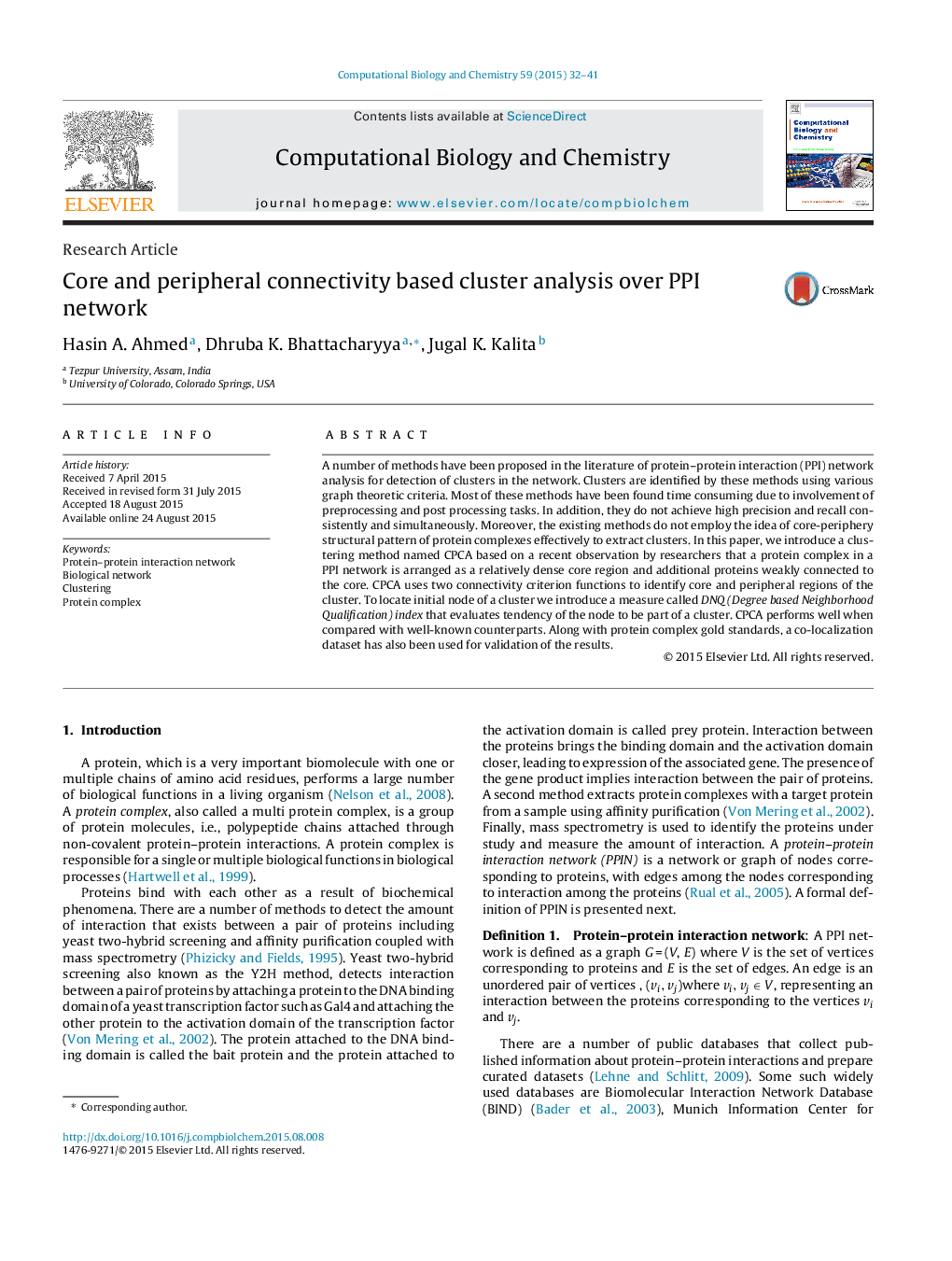| Article ID | Journal | Published Year | Pages | File Type |
|---|---|---|---|---|
| 15029 | Computational Biology and Chemistry | 2015 | 10 Pages |
•CPCA uses core-periphery structure of complexes to detect clusters in PPI network.•Two criterion functions are used to identify core and peripheral regions of the clusters.•To locate initial node of a cluster a measure named DNQ index is used.•CPCA performs well when compared with well known counterparts.
A number of methods have been proposed in the literature of protein–protein interaction (PPI) network analysis for detection of clusters in the network. Clusters are identified by these methods using various graph theoretic criteria. Most of these methods have been found time consuming due to involvement of preprocessing and post processing tasks. In addition, they do not achieve high precision and recall consistently and simultaneously. Moreover, the existing methods do not employ the idea of core-periphery structural pattern of protein complexes effectively to extract clusters. In this paper, we introduce a clustering method named CPCA based on a recent observation by researchers that a protein complex in a PPI network is arranged as a relatively dense core region and additional proteins weakly connected to the core. CPCA uses two connectivity criterion functions to identify core and peripheral regions of the cluster. To locate initial node of a cluster we introduce a measure called DNQ (Degree based Neighborhood Qualification) index that evaluates tendency of the node to be part of a cluster. CPCA performs well when compared with well-known counterparts. Along with protein complex gold standards, a co-localization dataset has also been used for validation of the results.
Graphical abstractFigure optionsDownload full-size imageDownload as PowerPoint slide
